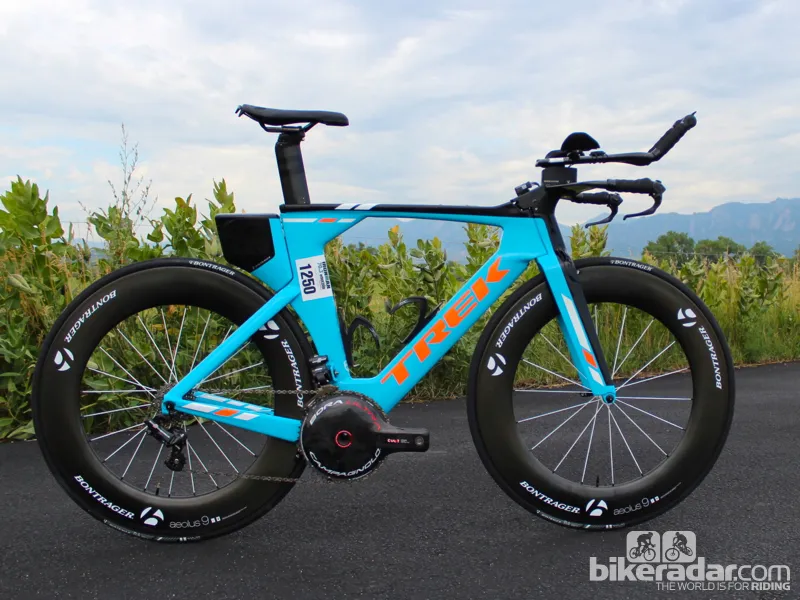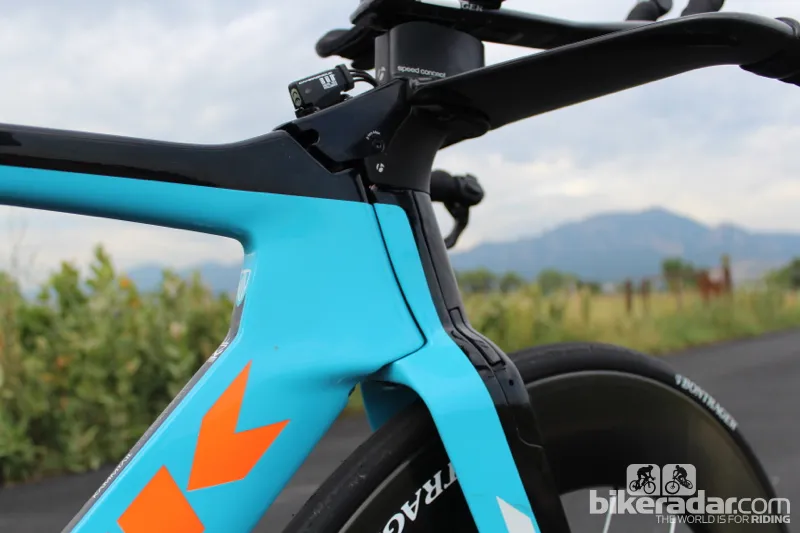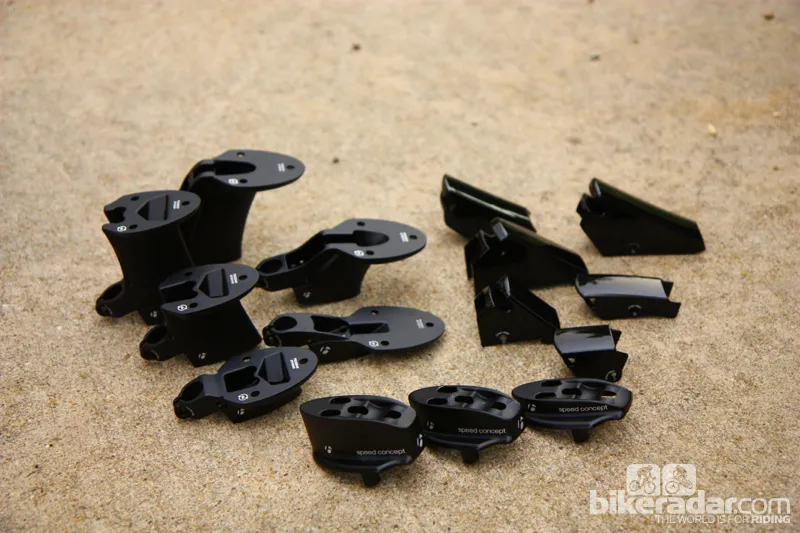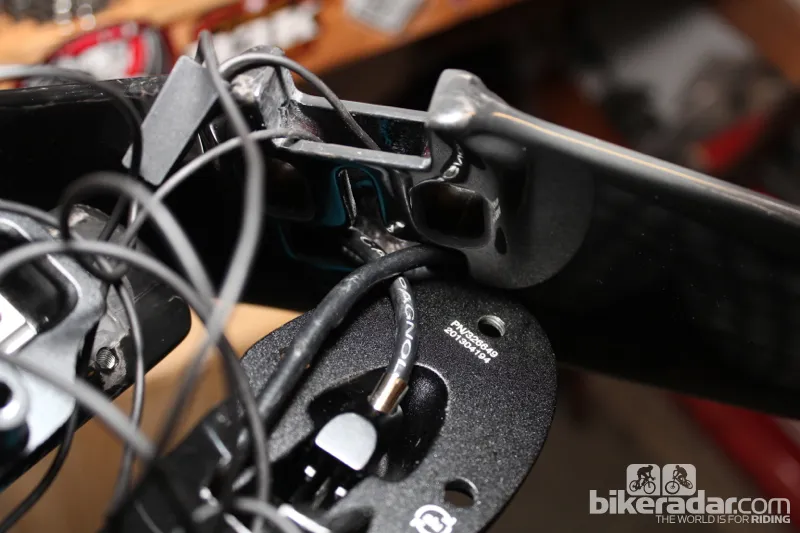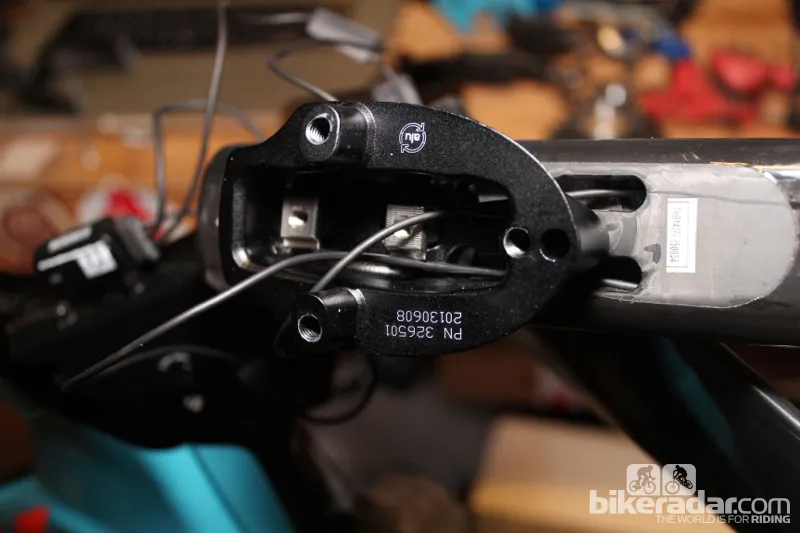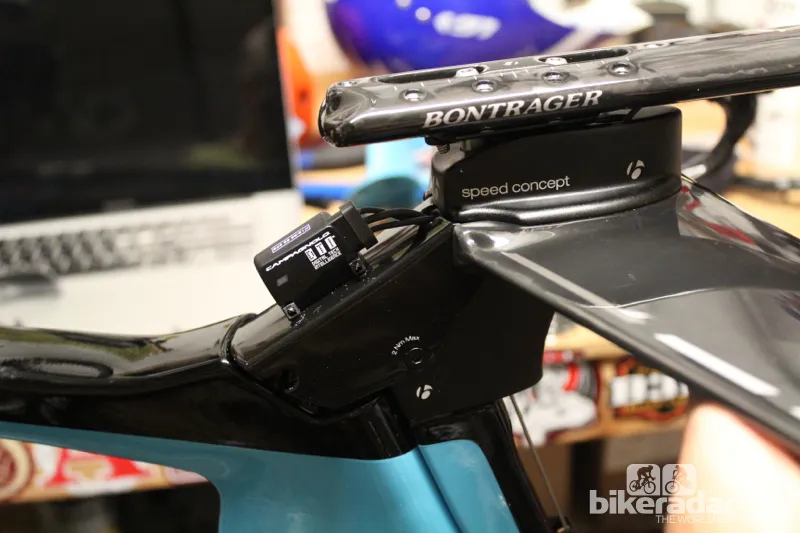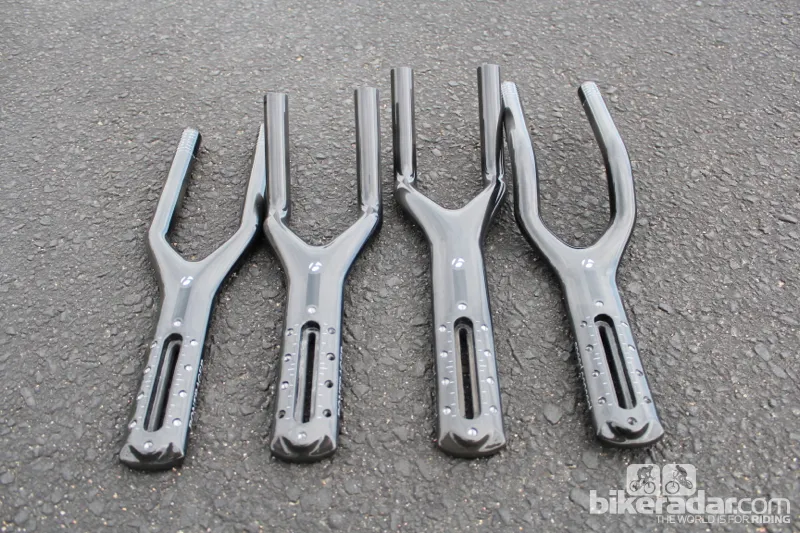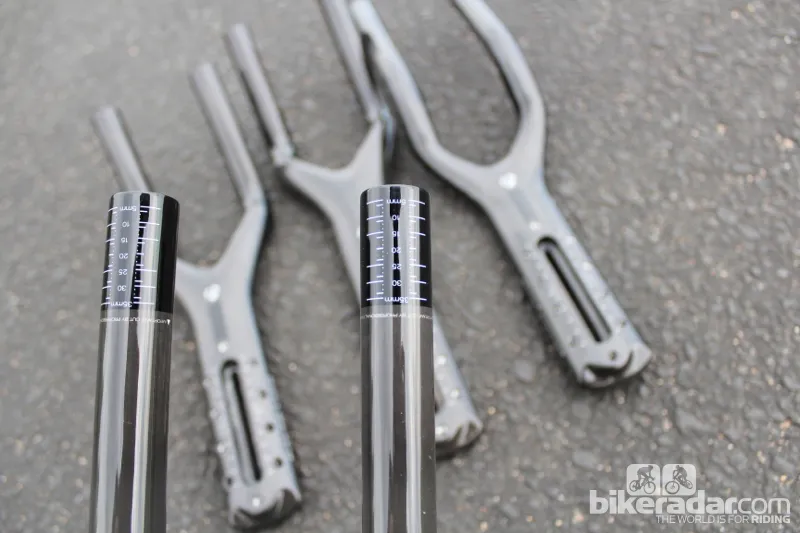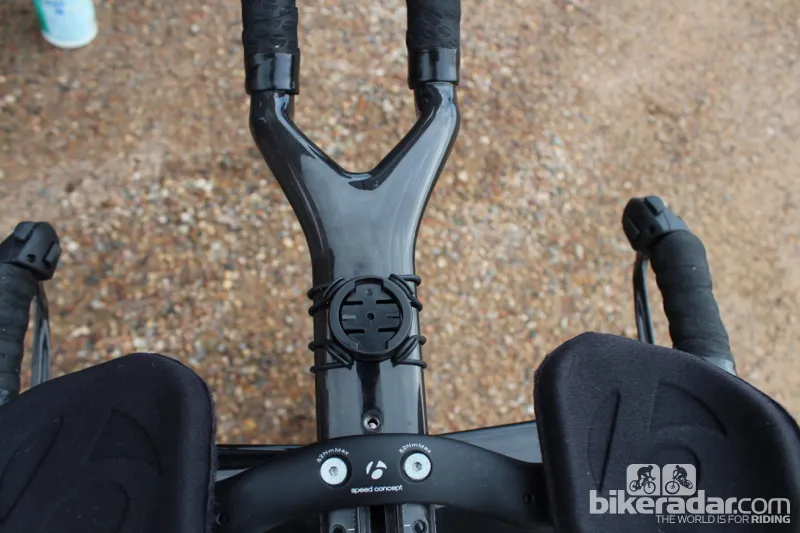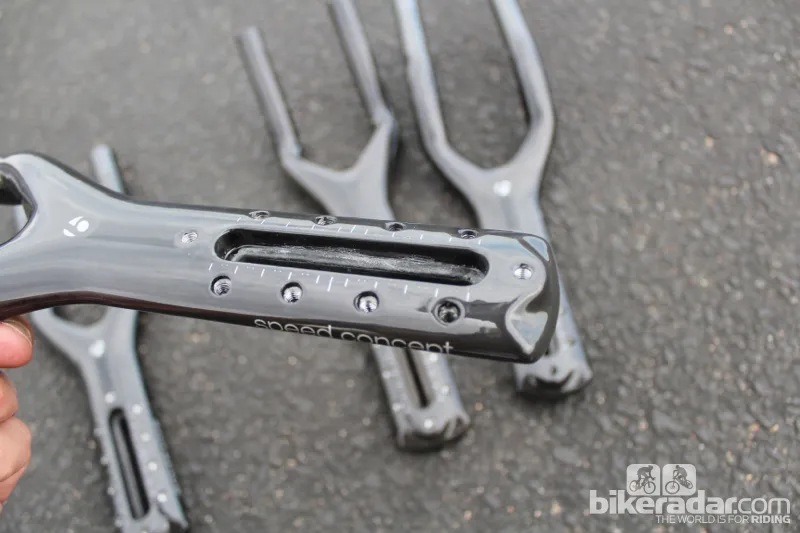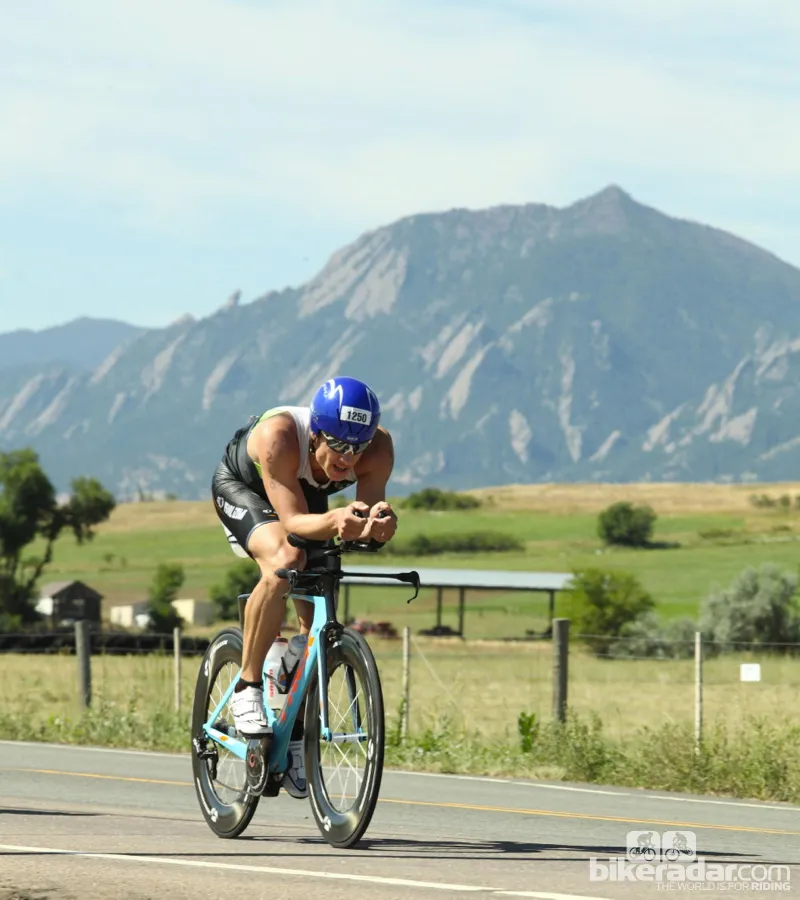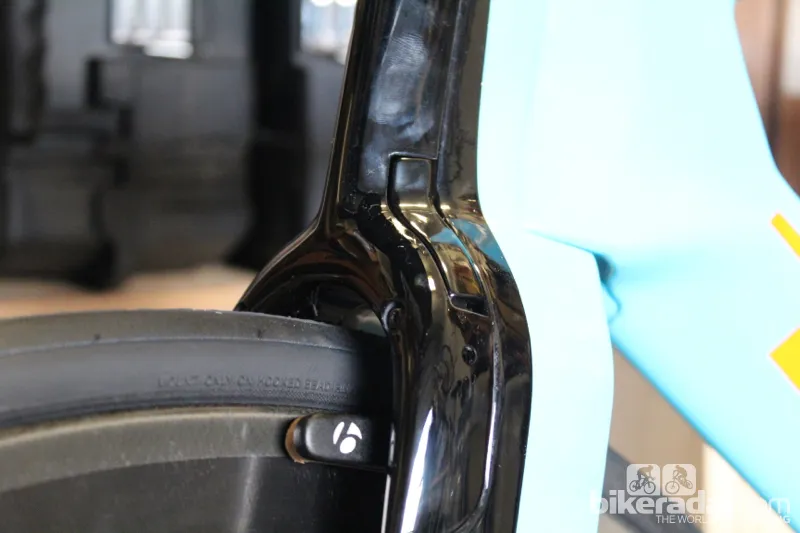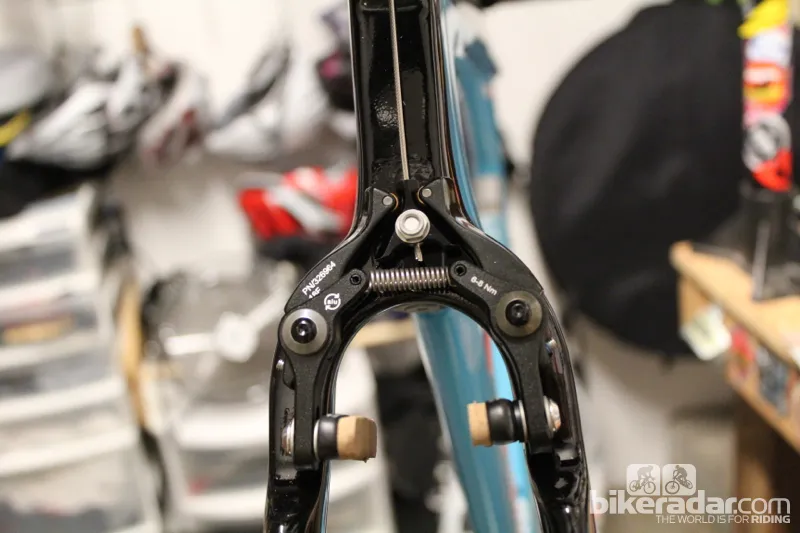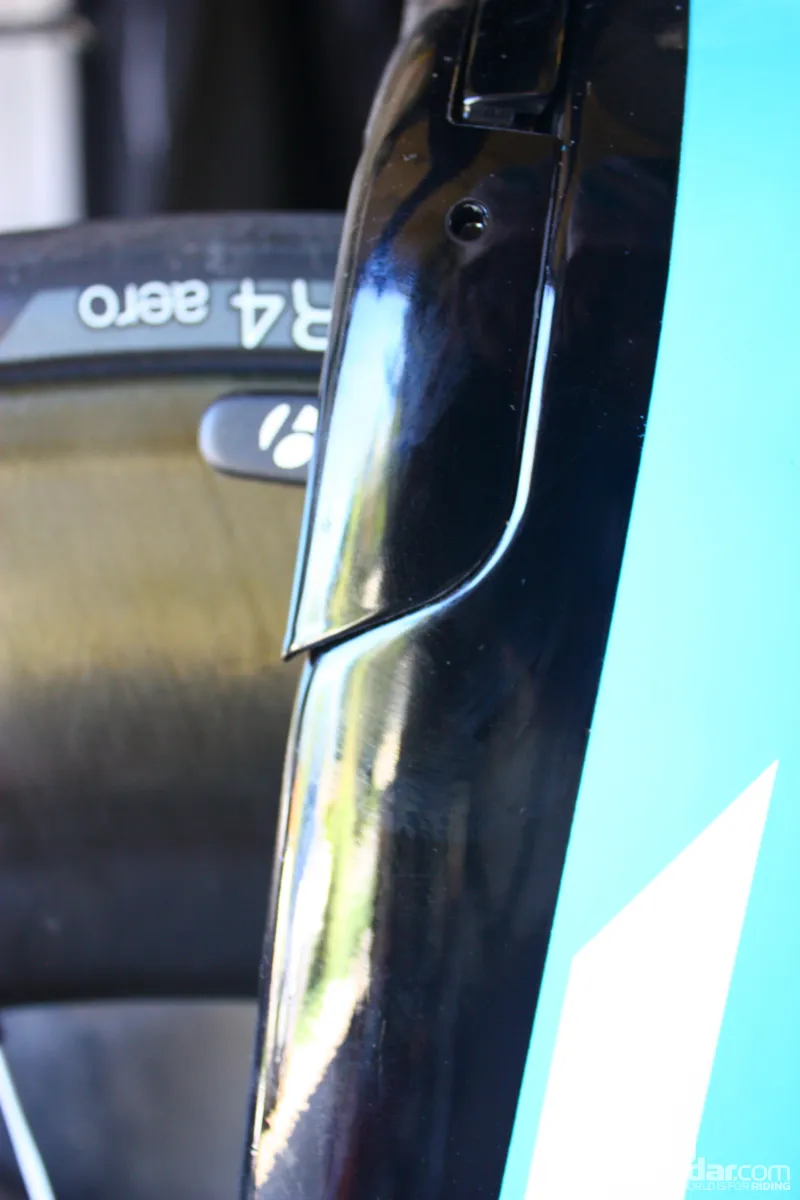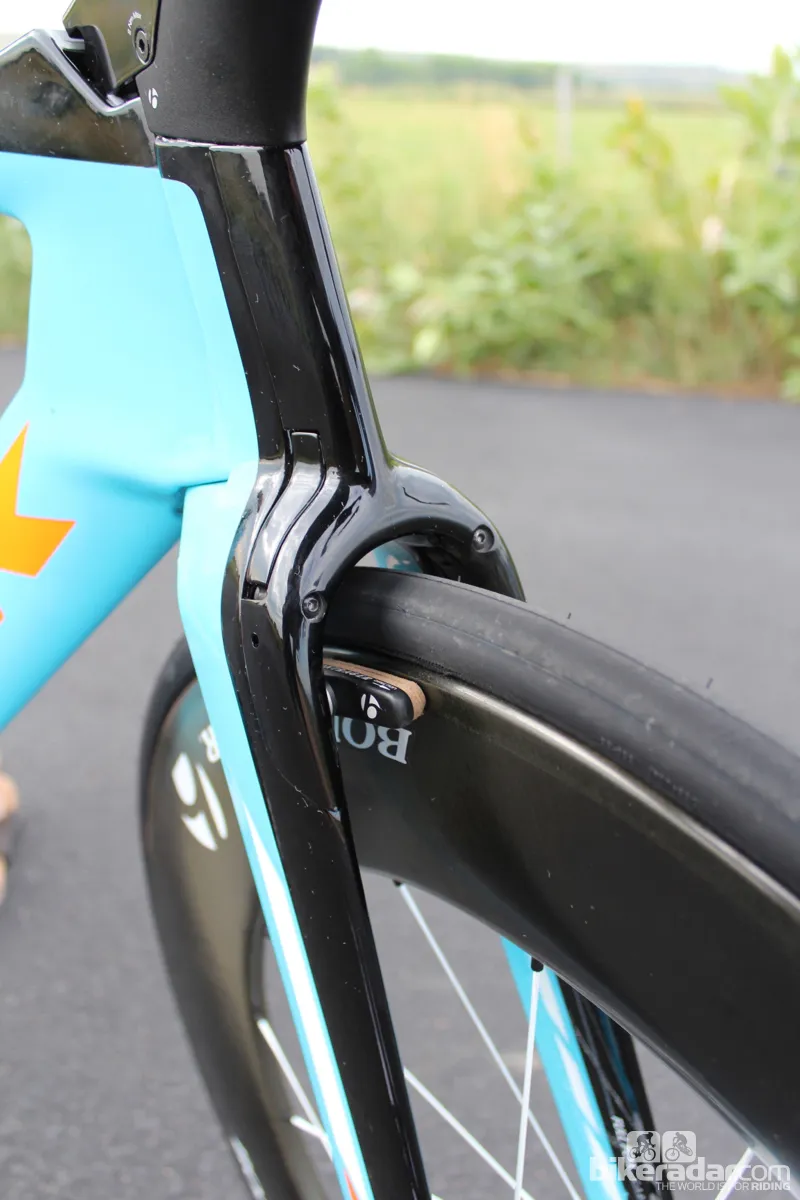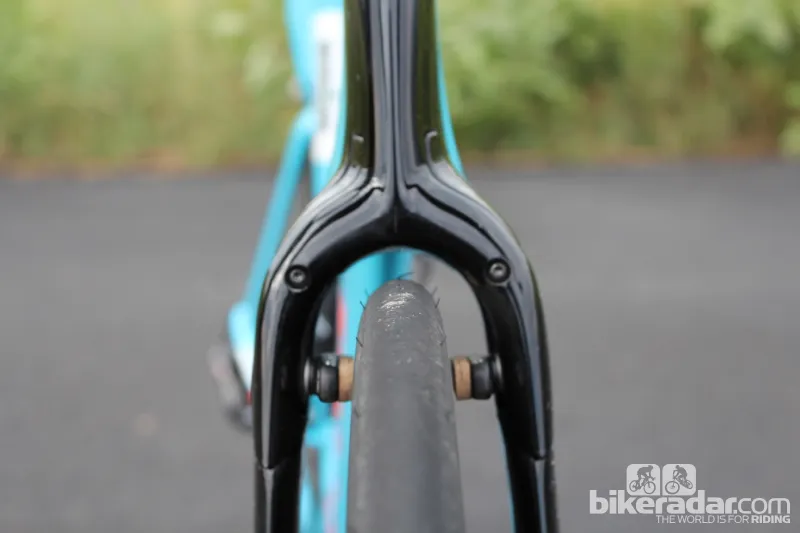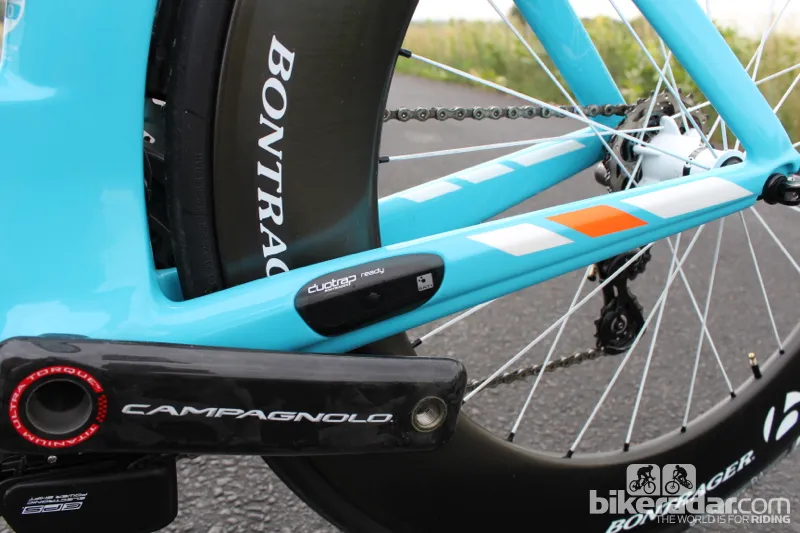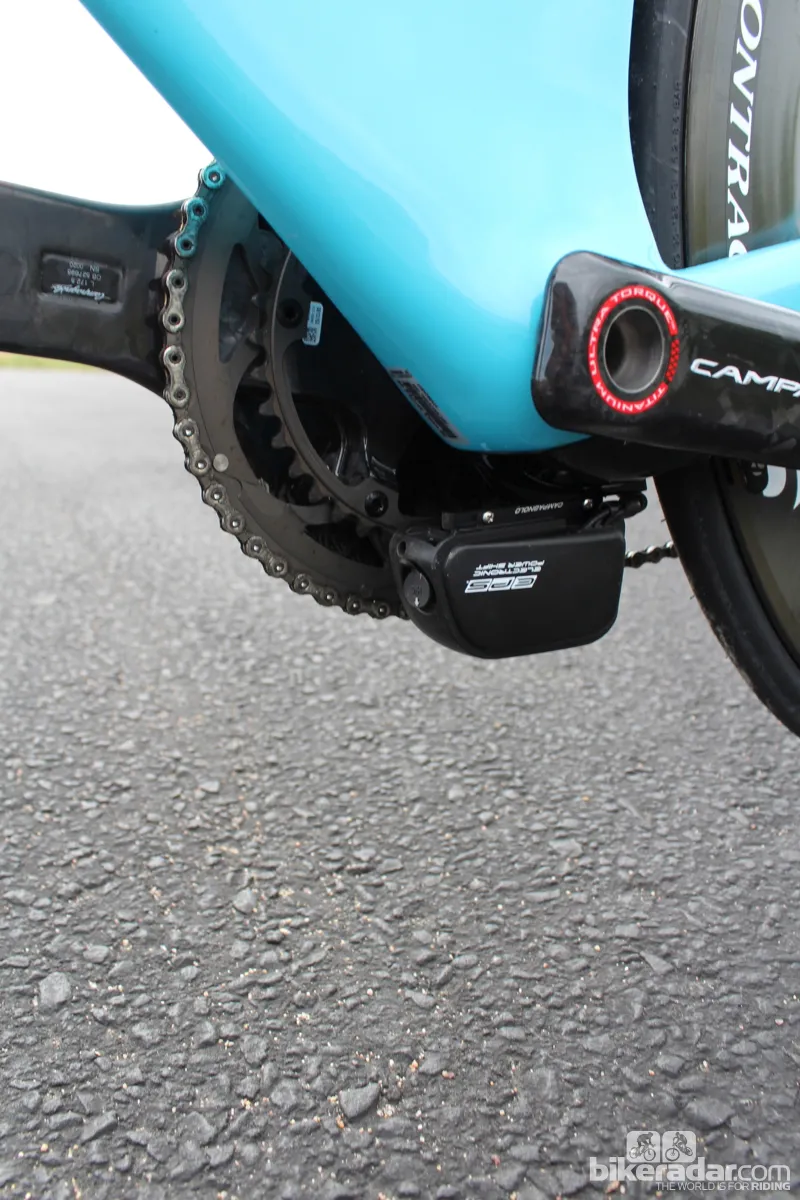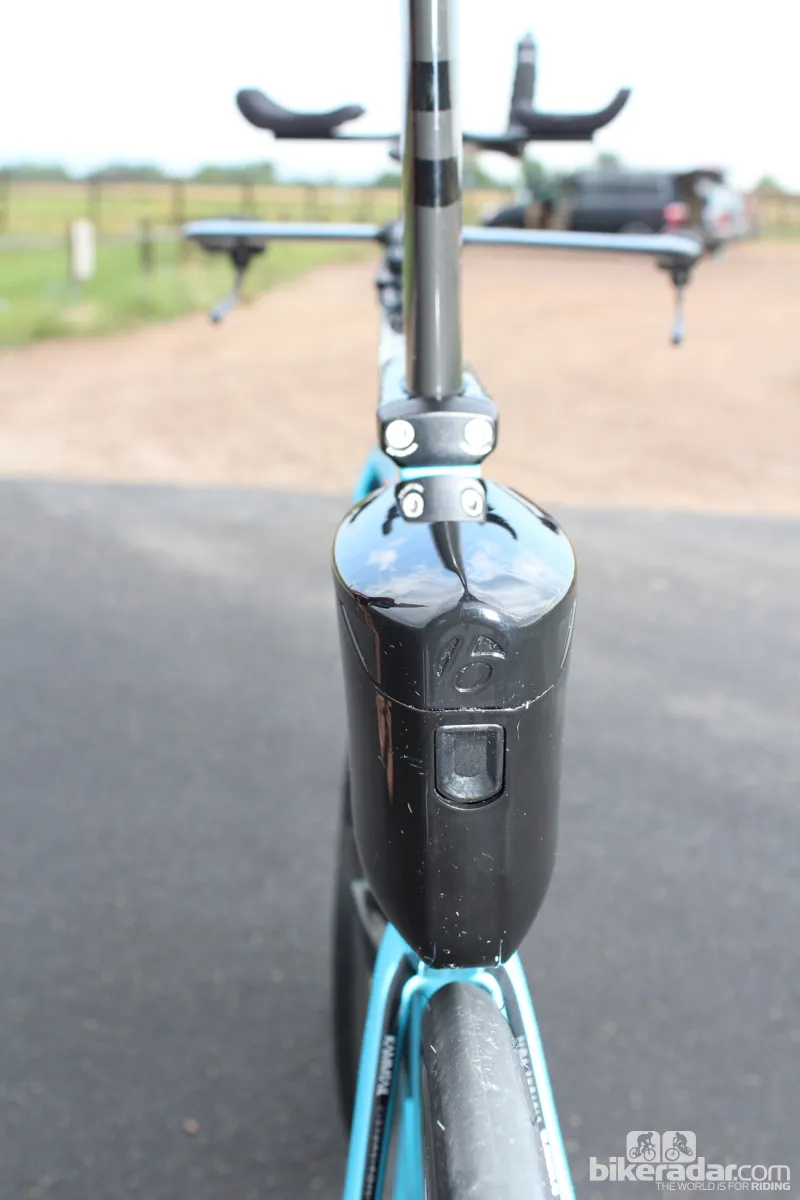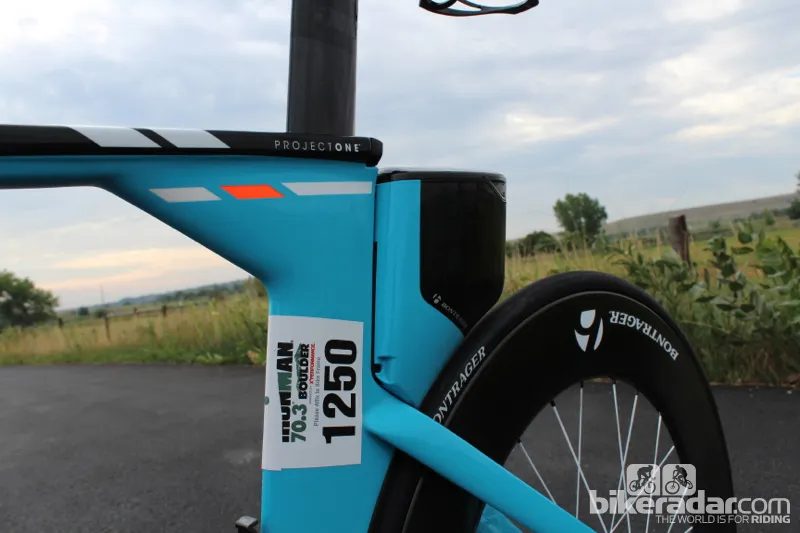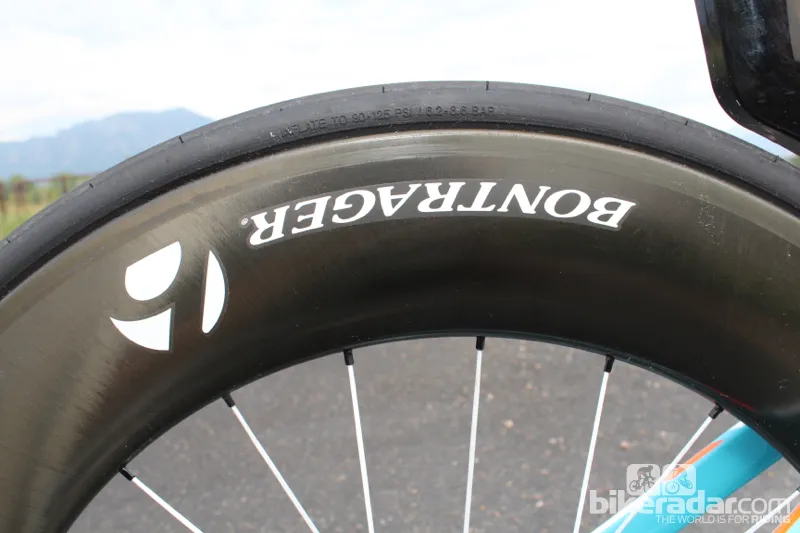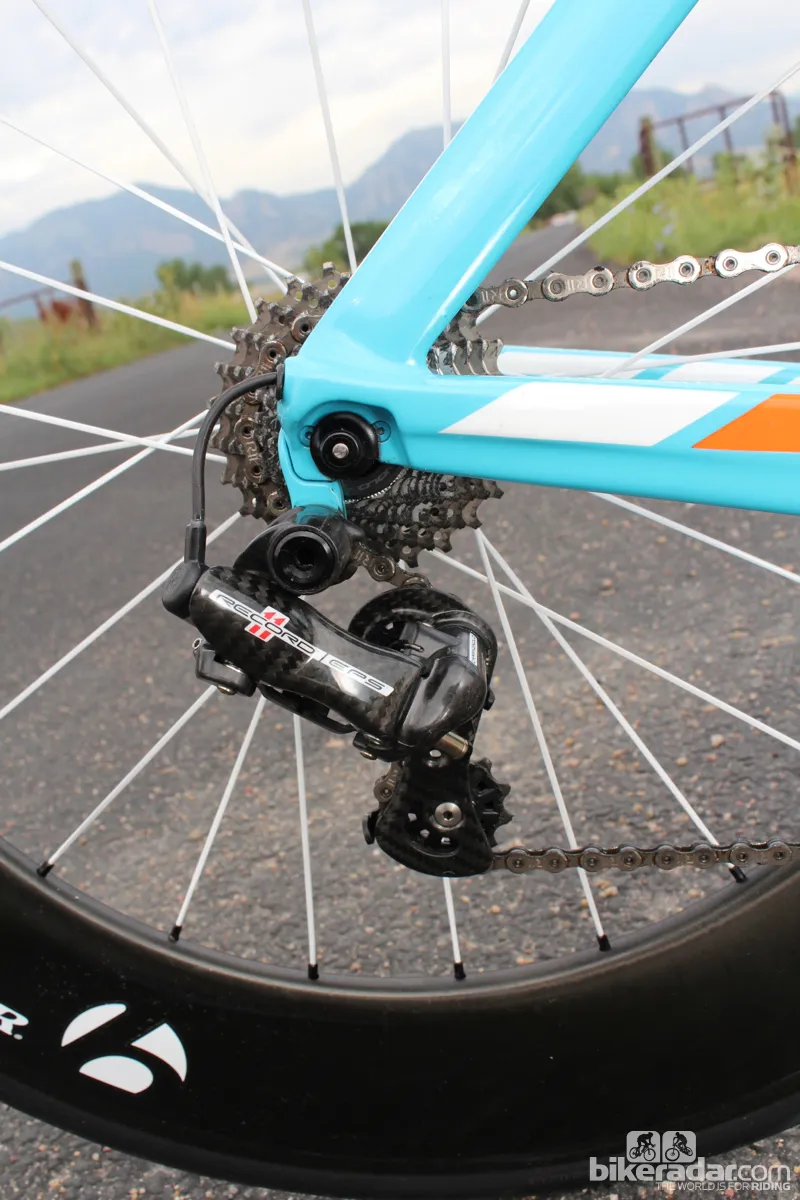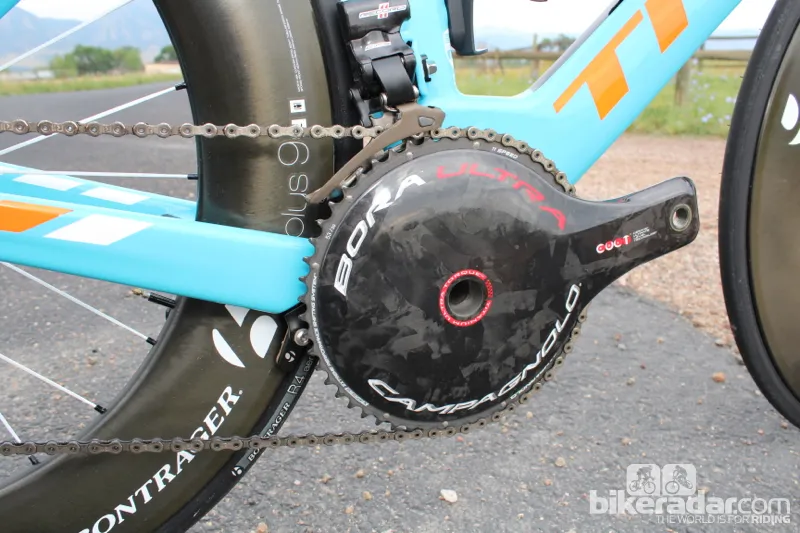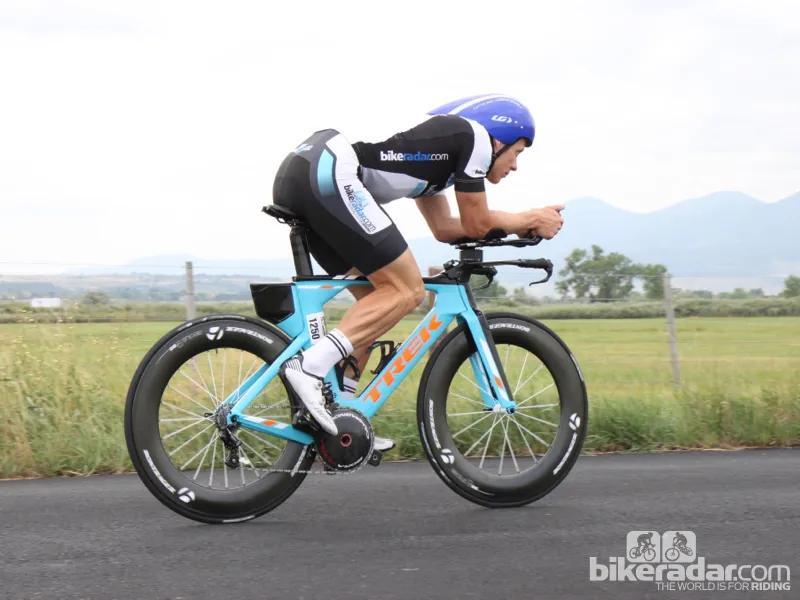The new 9 series Trek Speed Concept is a bitching bike, in two ways. Once built, the bike flies out on the open road with stable steering, great aerodynamics and good looks. But while you (or your mechanic) are building it or working on it, you will be bitching.
- Pros: Excellent aerodynamic performance: fast and stable; range of builds and paint jobs through Project One; add-ons like the trunk add real functionality and claimed aero benefit
- Cons: Adjusting front end for fit tweaks and/or travel is a chore; plastic frame parts feel cheap
Like most of the super bikes these days, the Trek Speed Concept is a purpose-built machine with a complete prioritization on performance above all else. Trek engineers can trot out reams of data on how the aerodynamics are superior to previous iterations, and looking at the svelte front profile and internalization of not only cables but fasteners as well, it’s not a stretch to believe that the bike performs admirably in the wind tunnel.
We tested the bike over a few hundred miles in training and in an Ironman 70.3, and came away very impressed with the bike. Our only gripes were the challenge of front-end adjustability and the relative sub-par performance of the plastic parts.
Trek sent a test bike with a Campagnolo Record EPS electronic group, but since this bike is available as Project One custom builds, we will focus on what is unique to the bike, plus the wheels.
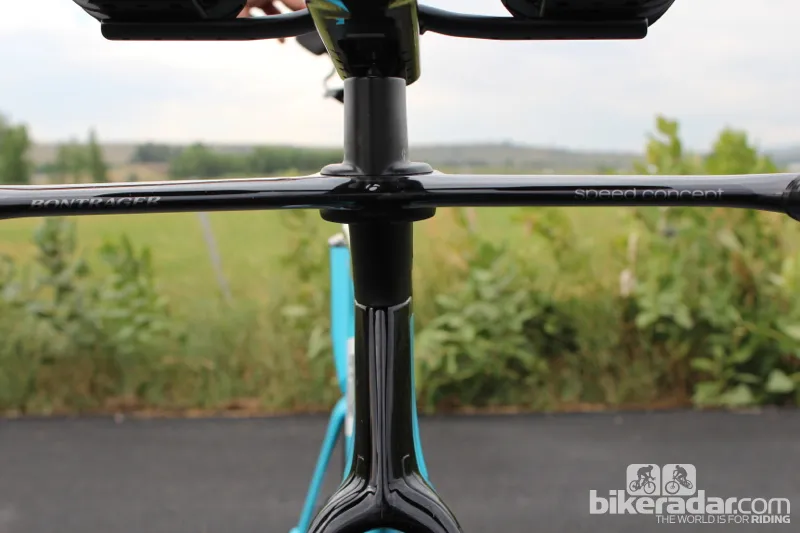
There is so little frontal area Trek can barely fit any logos
Frame: Refined for 0-12.5 degree yaw, lightened by nearly a pound
To tweak the original Speed Concept, Trek engineers studied real-world wind conditions on Ironman courses, and settled on optimizing the bike for yaw angles between zero and 12.5 degrees. (They found 3-5 degree average yaw in Arizona, up to a 13 degree average yaw in the notoriously windy Kona worlds course.)
By slimming the front profile and tweaking the Kamm tail tubing, the 2014 version is substantially faster and lighter than its predecessor, Trek claims. For our purposes, we were only going on feel, not wind tunnel data, and in our experience, the bike handled very well in all wind conditions. With a head tube angle of 72.5 degrees on the three larger sizes, and a seat tube angle of 80 degrees across all sizes, the Speed Concept was never nervous or twitchy, even with the 90mm-deep Aeolus 9 D3 wheels in blustery sidewinds. For sure, you can feel side pressure from the wind, but the handling is always predicable and manageable. We were comfortable riding in the aero extensions through fast corners and down windswept hills.
Bottom bracket area stiffness isn't so much of a concern on such a bike, but the bike does accelerate with some snap, perhaps due to the relatively short but robust chainstays, enormous bottom bracket area and huge down tube. The low bottom bracket (8cm drop) contributes to stability.
Comfort on the frame is good. We swapped out the stock saddle for a firmer option, and were still comfortable for two- and three-hour efforts on the bike.
Total bike weight for our Large sample was 19.18lb. While Trek declined to quote a frame weight, its engineers say the frameset, cockpit setup, headset, BB and small frame parts come out to 1,874g, which they claim is less than comparable measurements on a Cannondale SliceRS, a Specialized Shiv Tri or a Cervélo P5-6.
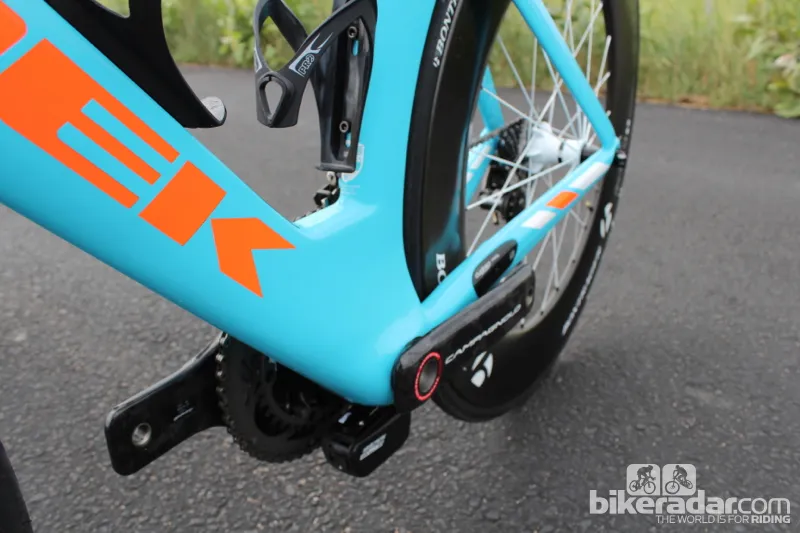
Trek Speed Concept 2014 focused on 0-12.5 degree yaw
Modular front end: For engineers, aerodynamics trumped convenience
Granted, this bike is way out on the pointy end of aero performance, and machines with such low-drag front ends have until recently been custom creations for the world's best pros. So we appreciate the challenge in building a stock bike that has both a superior aero shape and the ability to adjust to fit a range of riders. Trek's solution is a modular front end, with a collection of stem heights/lengths and riser blocks. From there, one of four monocoque extension bars mounts atop the riser block of choice, and the pads are mounted via a collection of bolts and mount options. Should you have your measurements dialed ahead of time, Trek provides a worksheet that will get your fit close, specifying which stem and riser block to use.
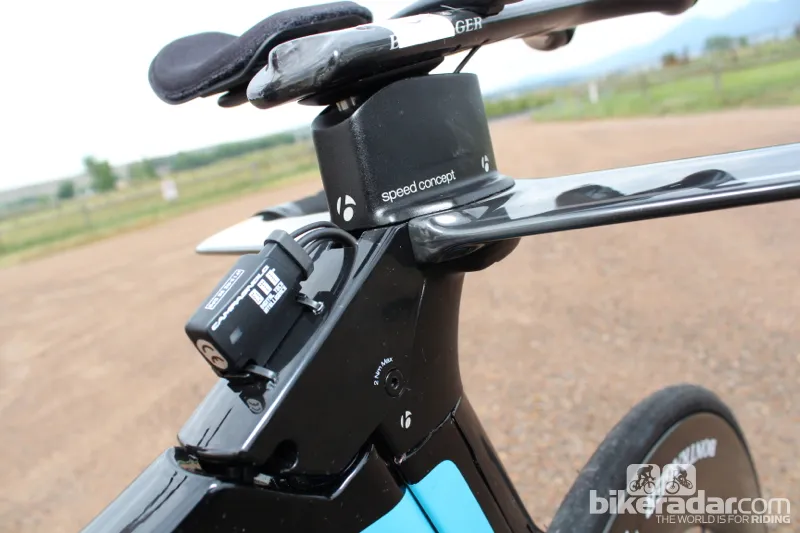
The modular front end consists of various-sized stems and riser blocks, as well as the base bar, extensions and arm rests
Also, should you purchase such a machine, your local Trek mechanic will do the heavy lifting on dialing in all of the various modular components for you. And if you never travel with the bike, you're golden. But should you travel by air or rail and have to pack the bike, or should you even want to lower the bars by 1cm for a shorter-distance event, you will wish you had three hands for the dis- and reassembly.
All that said, there is a great range of vertical, fore/aft and width adjustment on most of the touch points relative to other super bikes; it just requires some time and often some part-swapping to execute.
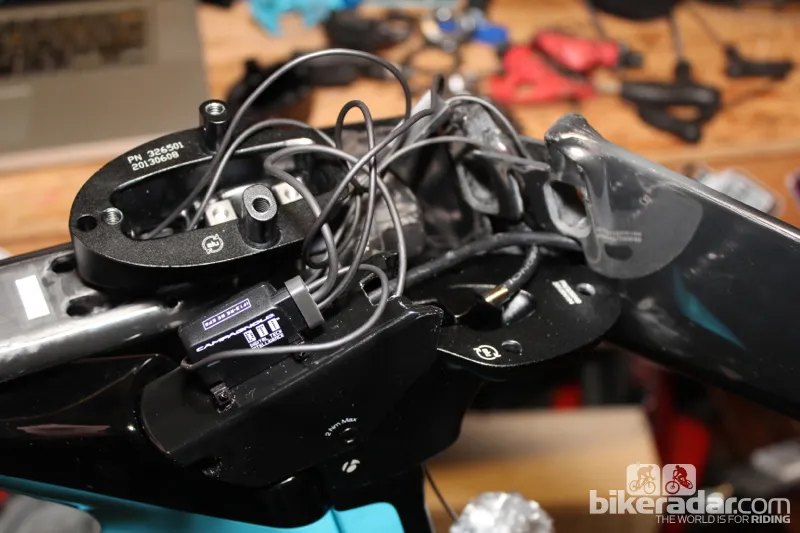
Electric systems are far easier to cram into fully integrated front ends than cabled systems, but adjustments still aren't easy
Trek has improved the cockpit options somewhat for 2014. You can tilt the extensions with the adjustment of three bolts, which is nice. But the base bar remains dead level. This is best for aerodynamics, of course, but we would have preferred a slight upward angle on the outer handles for a bit more grip security.
And while there are four styles of extensions to choose from — S-bend, straight, ergo and short ergo — none allow width or angle adjustment as they are one-piece designs. Whether it's another price paid for aerodynamics or perhaps just simplicity in construction, it's certainly something to keep in mind. We used the ergo bar and found that while the bend angle was comfortable, we missed the rotational adjustment you can get on most aftermarket bars.
Knee clearance when out of the saddle was not an issue with the bar - as it sometimes is with TT/tri machines with large aero basebars.
Other components: Seatpost is super user friendly, but plastic parts aren’t the same caliber as the rest of the bike
The Speed Concept's spring-loaded seatpost clamp is a thing of beauty. It's just... easy. One 5mm bolt at the front for final tightness combines with a finger-operated dial at the rear for angle adjustment. A spring pushes the top plate up when loosening the bolts, and unlike many seatposts, there aren't loose parts to fall out when you swap saddles. If only all seatposts were this easy. Kudos, Trek.
The plastic parts are a bit disappointing. The front brake fairing - while it does offer little holes for pad holder adjustment on either side - did not sit perfectly flush with the fork on our test bike. For a bike of this cost, that's not cool. Also, while we love the functionality and general design of the Draft Box, the lid attachment feels chintzy, relying on the elasticity of plastic latches to lock it into place. The one time we crammed the Box to capacity, it popped open when we hit hard bumps like railroad tracks. When not jam-packed, the lid stays shut, but the connection mechanism definitely has room for improvement.
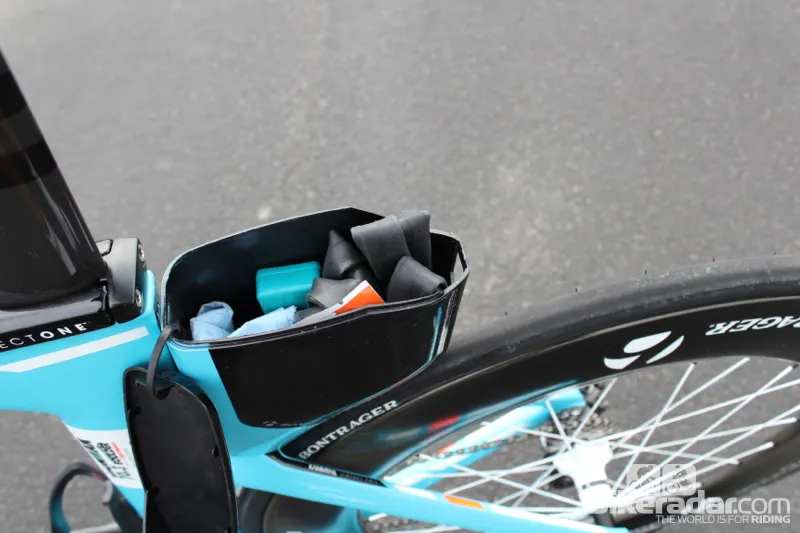
The new, wider Draft Box fits all your flat-fixing essentials and then some
Trek sells the Speed Concept as a frameset and in a variety of bike builds. While we won't go into the Campagnolo EPS Record group here, it is worth noting that the Bontrager Aelous 9 D3 carbon clincher wheels were flawless throughout the testing. Having carbon clinchers on this bike makes good sense to us as there's no reason you can't race and train on the same wheelset. Yes, your buddies and perhaps total strangers will make fun of you for training on super-deep carbon hoops, but this is much better than training on shallow wheels then jumping on deep wheels for race day and freaking out every time the wind blows because you are unaccustomed to the feel. And besides, if you're going to spend this much on a bike, why not rock the hot wheels every day?
Bottom line: The 2014 Trek Speed Concept is a highly specialized machine within an already specialized category of bicycles. Working on it is not easy, but it does seem to live up to Trek's promises of a very fast, very functional machine for solo efforts — and with custom paint options, to boot.
